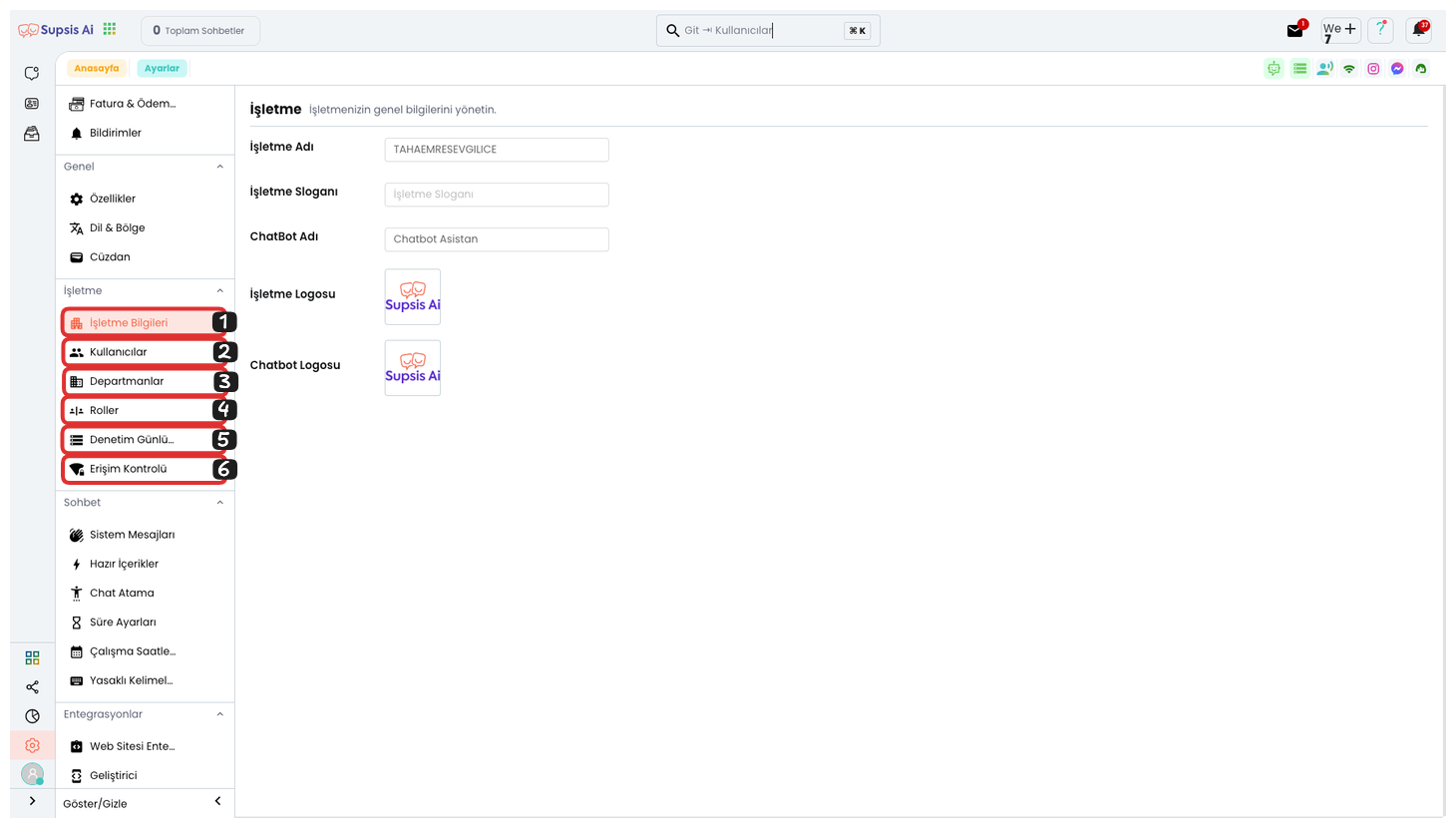Business Settings

1-) Business Information
In the Business Information section, you can manage your business's general information by filling in basic information such as your business's name, slogan, chatbot name, chatbot and business logos. This area allows updating visual and textual information belonging to your business.
2-) Users
The Users page is a tool that facilitates the management of users on our platform. This page allows you to view, edit, and manage user information. By managing user information, you can edit your representatives' information, roles, and departments. This feature helps make your team's structure and workflow more efficient.
3-) Departments
The Departments page ensures that incoming messages are directed to the right representatives by dividing users into specific groups. This structure makes transfers to the appropriate department based on visitor login form, chatbot selections, user behavior analysis, or requests from integrated communication channels. Department assignments can be made during the user creation process or through the user form. This way, each request is directed to the right department, ensuring that customer services are managed faster and more efficiently.
4-) Roles
The Roles Page uses the Role Management Module to manage users' permissions and access on the Supsis platform. This feature ensures that the platform is used securely and efficiently by assigning appropriate roles and permissions to each user. Additionally, you can provide a cleaner and easier interface for your representatives by closing the visibility of unused modules. This way, each representative only has access to tools suitable for their task, thus increasing efficiency and eliminating unnecessary complexity on the platform.
5-) Audit Logs
You can see the records of all changes and movements made in the system in this section. Audit Logs play a critical role in monitoring operations on the system. You can track every change made, logins-logouts, and other important events, and search according to specific dates and events using filtering options. This way, you can perform security and performance management more effectively by observing all activities in the system in detail.
6-) Access Control
Access Control allows you to limit panel access based on IP. With this feature, you can increase security by giving access permission only from specific IP addresses. For example, you can protect your sensitive data by restricting access from outside company IP addresses. This way, it is possible to ensure data security by ensuring that only authorized users have access to the system.